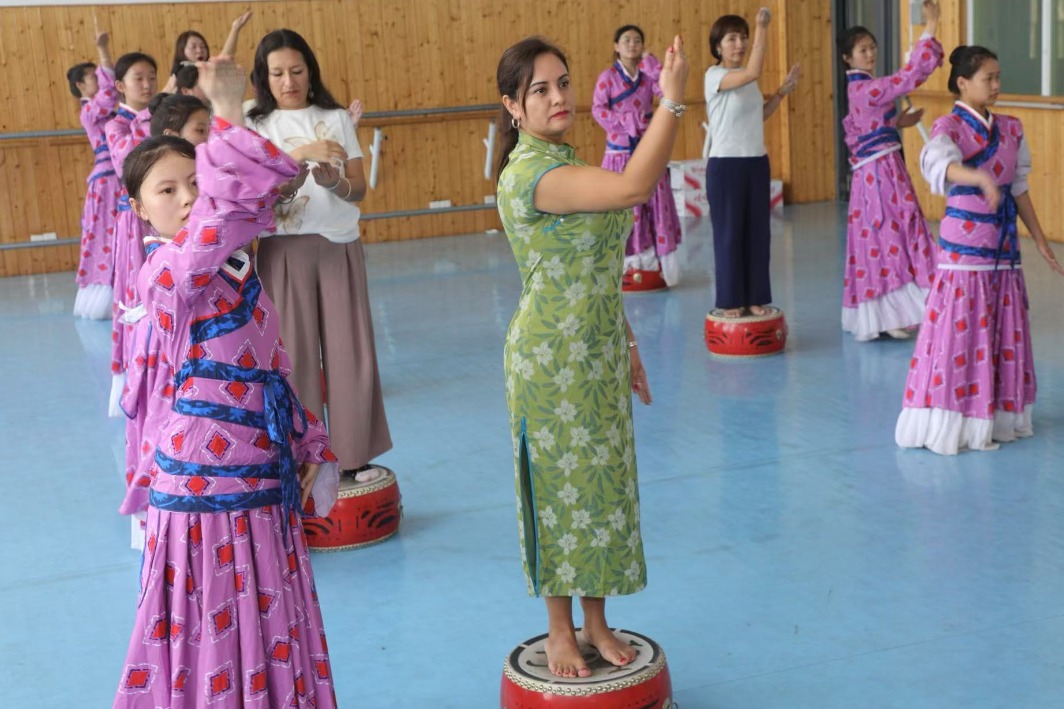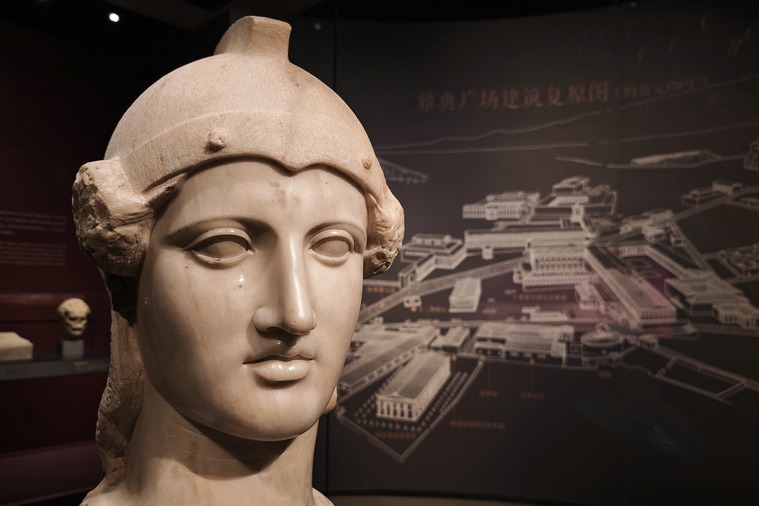Young Peruvians foster Sino-Peruvian ties
Two Peruvian students in China share their experiences of cultural exchange, highlighting opportunities for deeper cooperation between China and Peru in education, tourism, and technology.


Rosa Isabel Neira Alvarez, 19, is a first-year business administration major at Shanghai University (SHU). Before coming to China, she spent three years taking online Chinese courses through a Confucius Institute in Peru.
Although there are four Confucius Institutes in Peru, the one closest to her hometown, located at the University of Piura in Piura, is still two hours away. Despite the distance, Alvarez's passion for learning Chinese remained strong, and the online courses allowed her to continue her studies.
"My teachers were all native Chinese speakers, and I was able to make significant progress in a short period of time," Alvarez said. "They were patient and encouraging, and they motivated me to apply for scholarships that eventually brought me to China."
While Alvarez's interest in China was sparked by learning the language, 32-year-old Jemuel Zarabia Hurtado, also from Peru, was drawn by the country's rich cultural heritage.
"I was eager to immerse myself in Chinese culture and experience a society vastly different from the Western world," said Hurtado, a second-year PhD student in the management, science, and engineering program at SHU.
Before arriving, Hurtado imagined China as more traditional and reserved. "However, after living here for some time, I realized it is a dynamic society — financially open and socially adaptable," he said. "It's not only a leader in science and technology but also a place where culture deeply influences people's actions and contributes to its development."
For example, Hurtado noticed how Chinese society is shaped by Confucianism, Taoism, and the philosophy of yin and yang, all of which influence personal behavior and core values in areas such as relationships, social harmony, discipline, and work.
Alvarez shares similar sentiments. Having spent time in both Nanjing in Jiangsu province and Shanghai, she was impressed by China's infrastructure, particularly its subway systems, which far exceed those in Peru in complexity. "I took the wrong direction the first time, but thanks to the subway announcements and signs in English, I quickly found my way," she said.
Hurtado observed notable differences in social norms and culture between China and Peru.
"Chinese culture emphasizes collective values, respect for authority, and a more formal approach to social life, while Peruvians tend to have a more relaxed and informal way of interacting," he said.
For example, Hurtado explained that in Peru, people often greet each other with a kiss on the cheek or a hug, accompanied by cheerful expressions like "Hola, amigo". In contrast, greetings in China are typically more formal, with a slight bow or handshake, and physical contact is usually avoided. Also, social gatherings in China are generally more planned and structured, while in Peru, they are much more spontaneous and flexible.
Despite these differences, Hurtado found common ground between the two cultures. "Both societies place a strong emphasis on family values, and respect for elders is fundamental," he said.
Through conversations with his Chinese friends, Hurtado realized that many of them were unfamiliar with his homeland.
"They're often surprised when they first learn that I'm from Peru, as it's not as well-known in China as other countries, partly because it's so far away," he said.
Hurtado is always happy to introduce his country's culture to his peers in China because he believes that youth play a crucial role in strengthening the relationship between China and Peru.
"Young people have a deep understanding of contemporary issues and are more adaptable to social changes," he explained.
"By engaging in exchanges, supporting cultural initiatives, and advancing trade and diplomacy, we can foster collaboration in areas of mutual interest," he added.
This is why Hurtado once represented Peru as a student ambassador at SHU's cultural festival. "It helped both Chinese and international students better understand and connect with my home country. Events like this are essential for fostering cultural understanding," he said.
Hurtado is also involved in the Jiangsu-Latin America and the Caribbean University Cooperation Alliance, which focuses on promoting political, economic, scientific, and cultural exchanges.
On a broader level, Hurtado sees great potential in strengthening cooperation in technology and education.
"In the automobile sector, Peru has abundant natural resources, while China possesses advanced technologies that could benefit both countries," he said. "Academically, universities should collaborate more through exchange programs, joint research initiatives, and cultural projects."
Alvarez, on the other hand, highlighted opportunities for deeper cooperation in tourism, as both countries are home to ancient civilizations that honor traditional culture.
"In Peru, we have Machu Picchu, a symbol of Inca heritage, while China boasts iconic sites like the Great Wall, the Temple of Heaven, and the Palace Museum," she said.
Hurtado is optimistic about the future of Sino-Peruvian relations. "Trade and sustainable development will continue to drive growth," he said, citing China's plans to establish an electric vehicle assembly plant in Peru as an example.
"Young people should take an active role in promoting positive images of both countries through cultural, social, and commercial activities," he said.
lixinran@i21st.cn





































